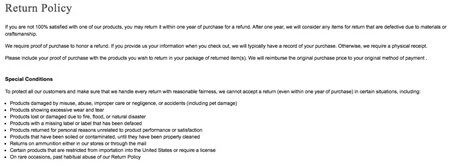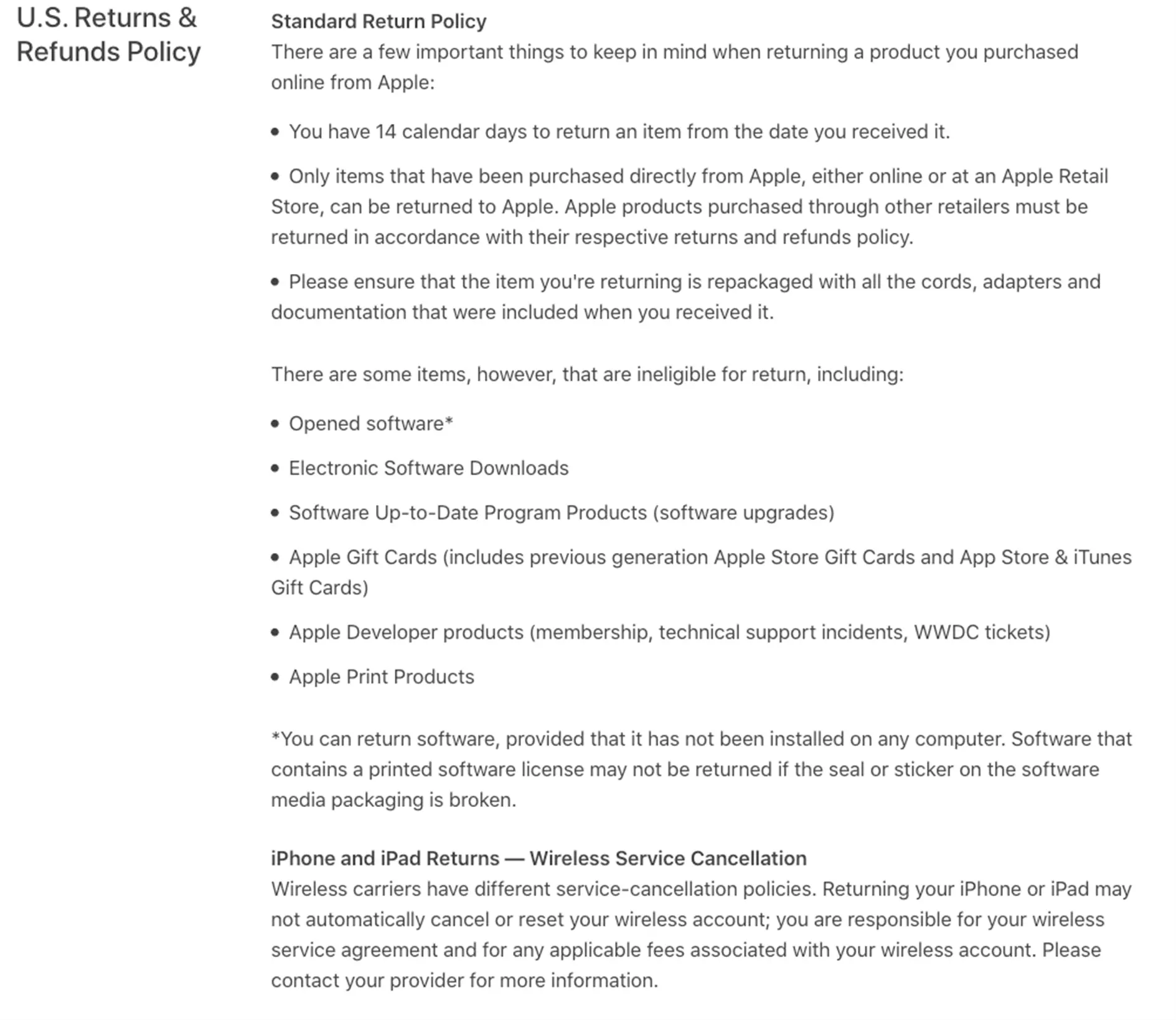Return policy: Definition, templates, and examples
If you sell products online or offline, you’ll surely encounter customers who want to make returns. You should be prepared with a well thought out return policy. Keep reading to find out what the law says about returns and to view some return policy examples.
- Professional templates
- Intuitive customizable design
- Free domain, SSL, and email address
What is a return policy?
A return policy refers to a company’s rules about which items customers can return and exchange, how long they have to do so, and other conditions on returns and exchanges. Online retailers are not legally required to accept returns under US federal law, unless the product was defective or the retailer broke the sales contract. This means that it’s completely up to you as a company whether and how you want to accept returns. However, whatever return policy you decide on should be clearly posted on your website – several states have laws that require retailers to clearly disclose their return policies.
A customer’s experience making returns has a large impact on whether they decide to shop with you again. Returns are a big part of the reality of online shopping - a customer might order an item in multiple sizes in order to try them on at home and see how they fit, or might receive an item only to realize that it doesn’t look like they thought it would based on the product images. In these cases, you’ll want to make the experience as smooth as possible.
You haven’t set up your online store yet? You can create your own online store with IONOS and sell your products online.
Returns vs. exchanges
In everyday speech, exchanges and returns are often talked about interchangeably. However, there’s a significant difference between the two words:
- Exchange: If you offer your customer the option to exchange a product, they’ll either receive another product of the same value or store credit in the value of the item they returned.
- Return: With returns, the customer receives their money back.
It’s up to you whether you want to offer your customers the option to exchange or return items. Many retailers offer both. Whichever option you decide to offer, keep in mind that your return policy is legally binding.
Designing the right return policy for your company
Since there are no rules about what goes into your return policy, it’s up to you to decide what it looks like. Here are some areas you should cover:
- Which items can or cannot be returned. For example, you might decide that underwear or sale items are final sale.
- How long customers have to make returns. This can range from 14 days to 30 days to one year or forever. If you don’t define this and post it clearly, some states have laws dictating a default 30-day return period.
- Acceptable condition for returned items. Maybe you only want to accept items with the tags still on or in the original packaging.
- Whether the sales receipt is required for making a return. Often, store credit will be offered if the customer has lost the receipt.
- Who pays for return shipping. Nowadays it’s become common for retailers to offer free shipping and returns, but many small online stores require customers to pay return shipping.
Return policy templates and examples
Once you’ve decided on the above factors, all that’s left is to formulate them and put them all together into your return policy. You should also specify the exact steps that customers should take to make a return, including where they should address returns to and where they can access the shipping label.
You’ll find numerous return policy templates for ecommerce online, which can be easily individualized. It might also help to look at return policy examples from well-known online retailers. We include a few examples below.
While it’s useful to model your return policy on those of well-established companies, you should never copy text from another online store. Website content is often subject to copyright. And in any case duplicate content is an SEO no-go.
Return policy example: L.L.Bean
Return policy example: Apple
Both of these companies have a dedicated page for their return policies. You should include links to your return policy in several places - for example, in the footer, FAQ, in your Terms and Conditions, and on the product page or checkout page. That way customers won’t have to look too hard to find it.
Take a look at our guides on how to create Terms and Conditions and making sure your store complies with laws.
Purpose of the return policy in your online store
Creating a return policy and integrating it into your online store is useful to you for the following reasons:
- Your return policy serves as an important tool for customer retention and can also be used for marketing. These days, customers expect to be able to make returns without encountering any problems - especially since online shopping doesn’t allow them to try items on or see them in person before purchasing.
- The return policy gives an extra layer of security to both you and your customers. No one will have any surprises about when and how the return happens. As mentioned above, creating a return policy is fully voluntary, but once you’ve put one online it’s legally binding. So if any disagreements arise, both you and your customers can refer back to the policy.
Take your online store to the next level and find out about how to use trust seals effectively and which distribution channels you should consider.
The return policy as a marketing tool
A particularly generous return policy can be a way to set you apart from the competition. For example, a targeted marketing campaign could consist of extending your return policy for a certain period or for a certain product line. Many companies offer extended return periods around the holidays, for example allowing items purchased from November 1-December 25 to be returned any time before January 15.
Exchanges and store credit can be a good way to retain customers. But be careful: This strategy can easily backfire. If you don’t offer returns for money at all, customers might be scared away and turn to your competition.
Tips for a profitable return policy
Allowing customers to return products without any specific reason will of course cost your company. Shoppers will be more carefree in their purchases, thinking “Why not buy it now and send it back if I change my mind?” However, there are a couple of things you can do to keep these costs in check:
- Consider whether you want to refund shipping costs and whether you want to cover return shipping costs. You can also decide to cover these costs when it comes to exchanges but not returns.
- Offer warranties that can’t be refunded. If the customer purchases a warranty and then sends the product back, you can use the profit from the warranty to cover any depreciation or labor costs incurred by the return. The warranty can also serve as a reminder to the customer of the value of the product.
- In the course of the return/exchange process, offer customers concrete products that they can purchase in place of the returned item. Up-selling and cross-selling increase the likelihood that an item will be exchanged instead of just returned.
Please note the legal disclaimer relating to this article.



